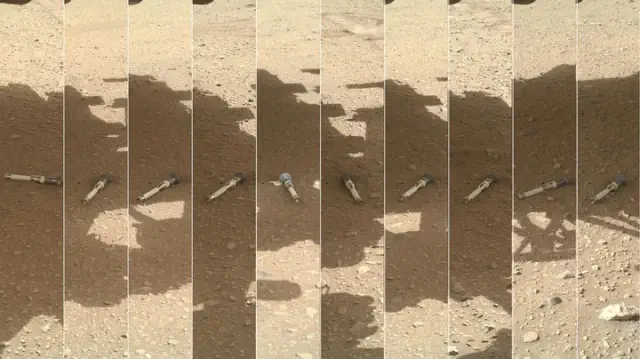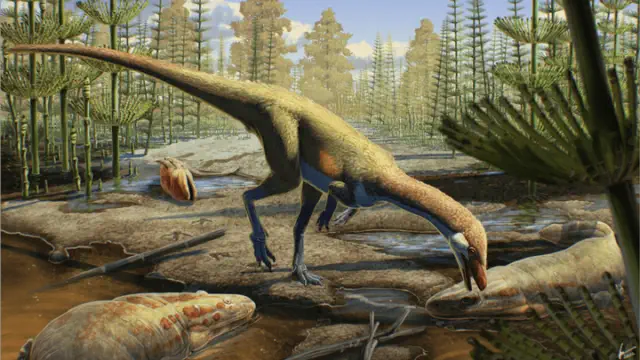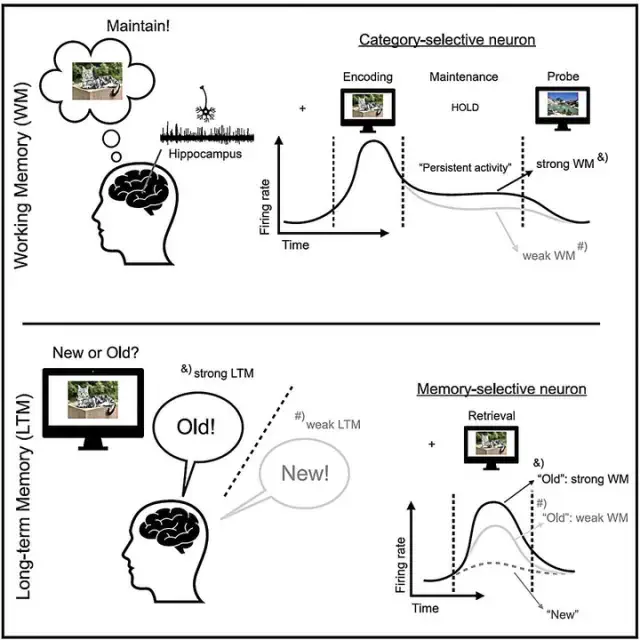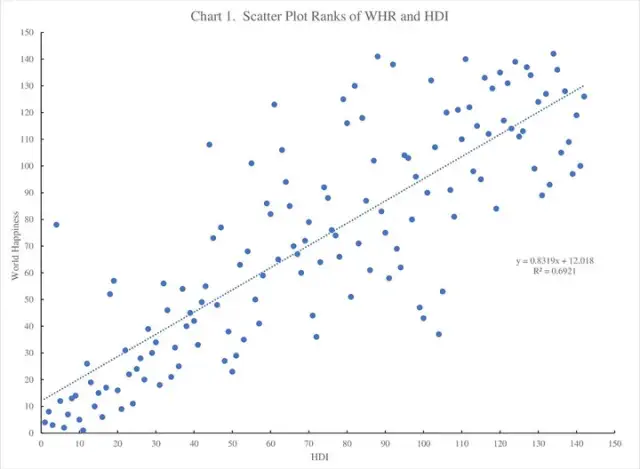
Existing Neuroanatomical Differences Associated with Substance Use in Children
Many correlations, such as a reduced prefrontal cortex thickness and an increased overall brain volume, are observed prior to the onset of substance use. View pictures in App save up to 80% data. Adobe Stock THURSDAY, Jan. 9, 2025 (HealthDay News) -- Preexisting neuroanatomical variability is associated with substance use initiation in children younger than 15 years, according to a study published online Dec. 30 in JAMA Network Open. Dr. Alex P. Miller and his team from Indiana University School of Medicine in Indianapolis conducted a study to investigate the neuroanatomical characteristics linked to early initiation of substance use. They aimed to determine whether these associations indicated preexisting vulnerabilities. The research utilized data collected over a three-year period, starting from baseline, and involved a cohort of 9,804 children. Among them, 35.3 percent reported having begun using substances before reaching the age of 15. The researchers found a link between the start of any substance or alcohol use and a thinner cortex in the prefrontal areas (such as the rostral middle frontal gyrus, β = –0.03). In contrast, they observed a thicker cortex in other brain lobes, as well as increased volumes in the globus pallidus and hippocampus, along with enhanced overall brain structure indices (for example, a larger whole brain volume, β = 0.05). Additionally, cannabis use initiation was associated with a reduced volume in the right caudate (β = –0.03). Most of these associations, including the thinner prefrontal cortex and the larger whole brain volume, were noted to precede the initiation in further analyses that focused on postbaseline initiation. "The authors suggest that a deeper comprehension of the connections between brain structure and substance use could reveal predispositional risk factors, offering valuable insights into the early origins of substance use disorders and the clinical mechanisms that lead to various negative health outcomes associated with substance involvement."

Mars rock samples might hold clues to extraterrestrial life, but will NASA be able to return them to Earth?
NASA plans to investigate two distinct methods for retrieving Mars rock samples gathered by the Perseverance rover, with the potential that these samples may hold clues to the existence of extraterrestrial life. View pictures in App save up to 80% data. A photomontage showcasing the tubes filled with Martian samples that NASA intends to retrieve and return to Earth. NASA has announced two potential plans for retrieving rocks from Mars that may contain evidence of alien life. Since its launch in 2021, NASA's Perseverance rover has been actively gathering rocks and sediments from a historic lakebed on Mars. Nevertheless, NASA is currently faced with the challenge of figuring out how to return these samples to Earth for further examination. The original Mars Sample Return Program called for collecting the Perseverance samples by 2033, but delays and spiraling costs forced NASA back to the drawing board last year. NASA will now explore two new landing strategies for retrieving the rock samples before deciding on which one to pursue in 2026, according to a statement released on Tuesday (Jan. 7). "Pursuing two potential paths forward will ensure that NASA is able to bring these samples back from Mars with significant cost and schedule saving compared to the previous plan," Bill Nelson, NASA administrator, said in the statement. "These samples have the potential to change the way we understand Mars, our universe, and – ultimately – ourselves." The search for extraterrestrial life on Mars There's no guarantee that life ever existed on Mars, but if it did, then it's possible the Perseverance rover may already have found signs of it in the Jezero crater lakebed. Scientists won't know for sure what's in the samples until they get them back to Earth and study them in a lab. NASA's Mars Sample Return Program was initially supposed to cost $7 billion, but when the mission's estimated price tag climbed to $11 billion — an upper-end estimate calculated by an independent review board — and was set to be delayed until 2040, the agency announced a major program overhaul, Live Science's sister site Space.com reported. In September 2024, NASA approved 11 sample return proposals submitted by researchers and private firms to enhance the program. As part of this recent announcement, NASA will investigate and assess two of these proposals. Two routes ahead The first option relies on a tried and tested landing system design involving a rocket-powered sky crane, which uses cables to lower down the lander. NASA used this method to land the Perseverance rover on Mars in the first place, and it's estimated to cost between $6.6 billion and $7.7 billion. The second option relies on new commercial capabilities from private industry and is estimated to cost between $5.8 billion and $7.1 billion. NASA didn't discuss the commercial option in detail because of concerns about proprietary technologies and designs, Space.com reported. Regardless of which method NASA chooses, the landing system will use a smaller, modified version of the Mars Ascent Vehicle to carry the rock samples into orbit. The European Space Agency’s Earth Return Orbiter — a planned spacecraft that will launch no sooner than 2027 — will then collect and transport the samples back to Earth. "Mars Sample Return will allow scientists to understand the planet's geological history and the evolution of climate on this barren planet where life may have existed in the past and shed light on the early solar system before life began here on Earth," Nicola Fox, associate administrator for the NASA Science Mission Directorate, said in the statement. "This will also prepare us to safely send the first human explorers to Mars."

A spacecraft has flown past the north pole of Mercury and transmitted breathtaking images back to Earth.
View pictures in App save up to 80% data. This image released by the European Space Agency features detailed photographs of Mercury's north pole captured by the BepiColombo spacecraft, a collaboration between Europe and Japan. (European Space Agency via AP) [ASSOCIATED PRESS] CAPE CANAVERAL, Fla. (AP) — A spacecraft has beamed back some of the best close-up photos yet of Mercury’s north pole. The European and Japanese robotic explorer swooped as close as 183 miles (295 kilometers) above Mercury’s night side before passing directly over the planet’s north pole. The European Space Agency released the stunning snapshots Thursday, showing the permanently shadowed craters at the top of of our solar system’s smallest, innermost planet. Cameras also recorded images of the adjacent volcanic plains and the largest impact crater on Mercury, which measures over 930 miles (1,500 kilometers) in diameter. This was the sixth and final flyby of Mercury for the BepiColombo spacecraft since its launch in 2018. The maneuver put the spacecraft on course to enter orbit around Mercury late next year. The spacecraft holds two orbiters, one for Europe and the other for Japan, that will circle the planet’s poles. The spacecraft is named in honor of the late Giuseppe (Bepi) Colombo, an Italian mathematician from the 20th century. He played a significant role in NASA's Mariner 10 mission to Mercury during the 1970s and, two decades later, contributed to the Italian Space Agency's tethered satellite project that was launched aboard U.S. space shuttles. View pictures in App save up to 80% data. This image provided by European Space Agency shows close-up photos of Mercury showing Nathair Facula & Fonteyn crater taken by the European-Japanese spacecraft BepiColombo. (European Space Agency via AP) Photo: ASSOCIATED PRESS ___ The Associated Press Health and Science Department is backed by the Science and Educational Media Group of the Howard Hughes Medical Institute and the Robert Wood Johnson Foundation. The AP maintains full responsibility for all the content produced.

World's Oldest Equatorial Dinosaur Found, Dating Back 230 Million Years
"It was roughly the size of a chicken, but had an exceptionally long tail." View pictures in App save up to 80% data. The remarkable age of Ahvaytum bahndooiveche indicates that dinosaurs inhabited the northern hemisphere significantly earlier than previously believed. Image Credit: Gabriel Ugueto A recent study has revealed the discovery of the oldest equatorial dinosaur globally, as well as North America's oldest dinosaur. This chicken-sized creature, which lived approximately 230 million years ago, significantly alters our comprehension of dinosaur distribution worldwide, suggesting that their presence in the northern hemisphere dates back millions of years earlier than previously thought. The dinosaur, Ahvaytum bahndooiveche, was first discovered back in 2013 in what we now know as Wyoming. Once upon a time, this place was near the equator on the supercontinent Laurasia, which has since fragmented into North America, Europe, and Asia with the breakup occurring between 66 to 30 million years ago. The fossils were retrieved from the Popo Agie Formation. It took Dave Lovelace, a research scientist at the University of Wisconsin Geology Museum, and his team years to determine that it was a new-to-science species, as well as how old it was. Having only parts of the dinosaur’s legs to work with, it wasn’t easy, but together they’ve established it was likely a very early relative of sauropods – the group that would later give rise to the vegetarian giants like Patagotitan. Ahvaytum, on the other hand, was no such giant. Its name, inspired by the Shoshone language term for “long ago,” is a hat tip to quite how ancient this creature is. It’s now estimated to have lived 230 million years ago, something researchers were able to work out thanks to radioisotopic dating of rocks in the formation Ahvaytum’s fossils were found in. That puts it on a par with the oldest known Gondwanan dinosaurs, and raises questions about how and when dinosaurs first spread across the planet. View pictures in App save up to 80% data. The researchers aimed to enhance their field practices and show greater respect for the land by integrating the insights and viewpoints of Indigenous communities into their efforts. Image credit: Jeff Miller/UW–Madison Being so old – the oldest dinosaur ever found in North America, in fact – means Ahvaytum looked very different from the gigantic relatives that would follow millions of years later. Rather than being a giant, it looked more like what might be the closest living relative to T. rex. "It was basically the size of a chicken but with a really long tail," Lovelace said in a statement. "We think of dinosaurs as these giant behemoths, but they didn't start out that way." Ahvaytum’s discovery and age mark a pivotal piece of evidence that shows us dinosaurs were in the northern hemisphere much earlier than previously thought. It’s also made strides in mending the disconnect that has historically unfolded when scientists work among Indigenous communities, becoming the first dinosaur species to be named in the language of the Eastern Shoshone Tribe in collaboration with students and tribal elders at the Fort Washakie school. "The continuous relationship developed between Dr Lovelace, his team, our school district, and our community is one of the most important outcomes of the discovery and naming of Ahvaytum bahndooiveche," said Amanda LeClair-Diaz, co-author on the paper and a member of the Eastern Shoshone and Northern Arapaho Tribes. "Historically, research conducted in communities, particularly Indigenous ones, has often favored the researchers, leaving them as the sole beneficiaries of the findings. However, our collaboration with Dr. Lovelace seeks to disrupt this pattern, fostering a reciprocal relationship throughout the research process." The study is published in the Zoological Journal of the Linnean Society.

A UCLA study uncovers new insights into how neurons play a role in memory systems.
A new study conducted by researchers at UCLA sheds light on how the brain interprets sequences of experiences, potentially paving the way for advancements in the treatment of specific memory disorders. A study released in September investigates the brain's method of encoding intricate sequences of events. According to Pawel Tacikowski, the lead author and a former project scientist at UCLA, researchers found remarkable parallels between the brain's representation of spatial environments and the temporal patterns of these events. Tacikowski and his fellow researchers focused on the hippocampus – a brain structure through which all external information has to go to be stored as memory – in the study. The research focused on individual neurons, which are the cells in the nervous system responsible for transmitting electrical signals, according to Tacikowski. He explained that the team was able to conduct this analysis because the participants in the study were epilepsy patients who had already undergone the implantation of electrodes in their brains for medical purposes. According to psychology professor Barbara Knowlton, this technique enabled researchers to observe individual neurons as they engaged in the learning process. These neurons, referred to as concept cells, were previously discovered by the Fried laboratory to activate in response to an image or idea of an individual, according to Knowlton. The study participants were then presented with a particular series of images, according to Guldamla Kalender, one of the co-authors of the research. The sequence in which images were shown to the participants of the study was not arbitrary. According to Tacikowski, it was based on a particular graph, and the researchers discovered that they could recreate the relationships depicted in this graph by analyzing the firing patterns of the associated neurons. Ueli Rutishauser, a professor specializing in neurosurgery, neurology, and biomedical sciences at Cedars-Sinai Medical Center, stated that although the participants were unaware of any patterns in the sequence of images presented to them, their brains had already encoded these graph relationships. Jesse Rissman, a professor of psychology, psychiatry, and biobehavioral sciences, noted that the memory of the series of images became more robust during the participants' breaks. He explained that during these moments of rest, the brain would revisit the sequence associated with the learning experience. According to Rissman, this highlighted a similarity in the brain's processing of temporal and spatial information. It was already established that the brain revisits locations to memorize spatial details, and this study revealed that a similar pattern occurs when learning the order of events over time, he noted. According to Rissman, a key role of a memory system is its ability to forecast future events. "We frequently encounter scenarios where we can rely on our previous experiences to forecast potential outcomes," Rissman explained. "This ability enables us to make informed decisions in our lives, shaping our actions according to our anticipations." Dr. Itzhak Fried, the corresponding author of the paper and a professor of neurosurgery, stated that while this research focused on individuals with epilepsy, the findings are expected to be applicable to those without epilepsy as well, given that they have been supported by animal studies and fMRI results. Tacikowski stated that in the future, insights into how the brain initially establishes the temporal framework of experiences could aid in comprehending the preservation of the cognitive map and its decline in conditions such as dementia. Alan Castel, a psychology professor, emphasized the significance of studying memory, noting that it can influence both the treatment of memory disorders and the enhancement of memory capabilities. "As we age, it's common for us to forget certain things, which may indicate a breakdown in these systems," he remarked. Dr. Fried mentioned that the team aims to create a neuroprosthetic system designed to improve memory, potentially benefiting patients experiencing memory difficulties. “One of our primary objectives is to create, in essence, what I refer to as a memory support tool – similar to how a hearing aid functions,” he stated.

A happiness specialist reveals a concerning pattern: 'A decline in the overall well-being of the youth.'
View pictures in App save up to 80% data. Scatterplot ranks of WHR and HDI. Credit: PLOS ONE (2024). DOI: 10.1371/journal.pone.0305347 Economist David Blanchflower focuses on the topic of happiness. For over twenty years, the Bruce V. Rauner 1978 Professor has authored more than 30 research papers that uncover a consistent trend in how individuals generally perceive happiness and well-being throughout their lives. This pattern, which has been reproduced countless times by various researchers, is well-known for its representation on a U-shaped graph. "Essentially, our research indicated that individuals experience their lowest levels of happiness during middle age. Happiness seems to be prevalent in youth and again in later years, creating a U-shaped curve," explains Blanchflower, an expert in labor economics who was part of the Monetary Policy Committee at the Bank of England from 2006 to 2009. Recently, Blanchflower and his team have observed a concerning shift. The left side of the U—symbolizing the youth—is no longer rising. What’s behind this change? Young individuals across the globe have been expressing higher levels of dissatisfaction. Blanchflower suggests that the rise of smartphones and social media could be a significant contributing factor. Blanchflower states that although it has only come to light recently, the change in the happiness trend actually started over ten years ago. "The U-shaped curve was once considered a key concept in social science, but that has changed," he explains. "Our findings indicate that beginning in 2013, this U-shaped trend began to fade away. It's not that the previous observations were incorrect; rather, they evolved. We are now witnessing a global decline in the well-being of young people, particularly among young women." What raises concerns about smartphones and social media? Since the launch of the first iPhone in 2007, the prevalence of these technologies has skyrocketed, significantly altering how individuals, particularly children, interact socially. Blanchflower notes, "When children dedicate time to smartphones, they miss out on face-to-face interactions and the activities we, as kids, enjoyed." He adds, "Neuroscientists indicate that interpersonal interactions help our brains create crucial connections that influence social and emotional development." He contends that the hours children dedicate to smartphones could have been better utilized in interacting with peers and fostering their cognitive development. Supporting this claim, a recent study by the Centers for Disease Control and Prevention revealed a concerning correlation: increased social media usage among high school students is linked to a higher likelihood of experiencing bullying and cyberbullying. And Blanchflower himself recently published a paper in the International Journal of Wellbeing on how the experience of childhood traumas, including bullying, can have lifelong negative effects. "According to Blanchflower, the repercussions of bullying can last for decades, sometimes even up to 50 years. This suggests that cyberbullying could lead to a range of detrimental outcomes. It affects various aspects of life, including educational achievements, the quality of personal relationships, and even one's earning potential." Still, when they first noticed the change in the U-shaped graph, Blanchflower and his colleagues thought the trend might be related to major events, such as the COVID-19 pandemic or the financial crisis of 2008. But their deep dive into micro-data from major surveys in the U.S., Europe, and the U.K., among others, recently published in the journal PLOS ONE, showed that these events had only a short-term negative impact on reported well-being. According to Blanchflower, these temporary crises generated disturbances that obscured the longer-term patterns in the data. "We all acknowledged that COVID was a serious issue. However, what we overlooked was that COVID merely accelerated an ongoing trend that had been developing. Now, we find ourselves trying to make up for lost time as we were diverted by the pandemic and failed to recognize this persistent trend." A noticeable decrease in the happiness and overall well-being of young people has been reported across various nations, such as the U.K., U.S., Canada, Australia, New Zealand, Scandinavian countries, the Netherlands, France, Germany, and Italy. Over the last year, Blanchflower has collaborated extensively with the United Nations to analyze global trends in mental health. He is presently engaged in the development of multiple working papers commissioned by the UN, which examine trends in well-being among youth globally. He has already finalized studies focusing on the U.S., the U.K., Europe, Africa, and Latin America. According to him, well-being has notably decreased, particularly among young individuals who are internet users. (These papers can be accessed on Blanchflower's website.) Certain K-12 schools have begun restricting students' use of smartphones, and Australia has recently implemented a ban on social media platforms for individuals under 16 years old. Blanchflower emphasizes that grasping the reasons behind the trend is essential for discovering solutions to reverse it. "We must avoid creating a lost generation," he states. He is in the process of coordinating a significant conference scheduled for October, in collaboration with the Human Development Report Office of the United Nations Development Programme. This event aims to unite experts, global policymakers, and higher education leaders to exchange research findings and effective strategies for tackling the ongoing crisis. The symposium is set to take place at Dartmouth, where President Sian Leah Beilock has prioritized mental health significantly. He expresses, "There is an increasing agreement that this is occurring. The discussion revolves around the causes, the extent of its spread, and the appropriate responses. This is where experts will convene to deliberate, and we will examine effective strategies from across the globe." More information: David G. Blanchflower et al, The adult consequences on wellbeing of abuse and neglect in childhood, International Journal of Wellbeing (2024). DOI: 10.5502/ijw.v14i3.3513 David G. Blanchflower et al, Were COVID and the Great Recession well-being reducing?, PLOS ONE (2024). DOI: 10.1371/journal.pone.0305347 Supplied by Dartmouth College This story was originally published on Medical Xpress. Subscribe to our newsletter for the latest sci-tech news updates.